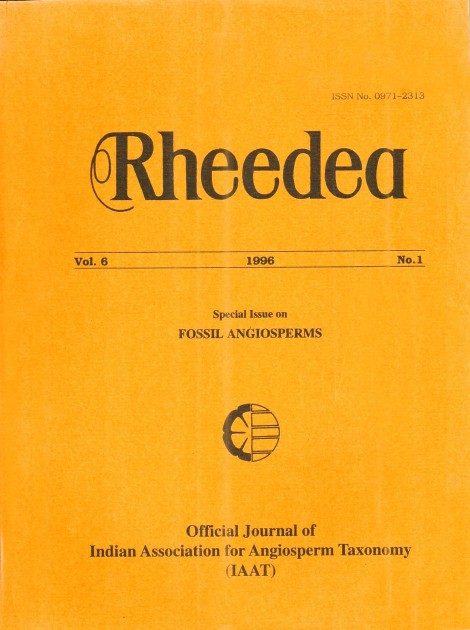Additions and preliminary study of an Oligo-Miocene Palynoflora from Chiapas, Mexico
Graham A. & Rodolfo Palacios Chavez
Published on : 01-Jan-2022
DOI : https://dx.doi.org/10.22244/rheedea.1996.06.01.01
DownloadAbstract
Palynomorphs and plant macrofossils are reported from the Oligo-Miocene La Quinta Formation at Simojovel, state of Chiapas, Mexico. The plant fossils presently recognized group into three paleocommunities-mangrove (Pelliceria, Rhizophora), marsh (Ceratopteris), lowland tropical rain forest (Pteris, Sphaeropteris/Trichipteris, Crudia, Hymenaea, Pachira, Tapirira), and upland woods (Pinus, Podocarpus, Asteraceae/Compositae (wideranging), Engelhardia-type, /lex). There is no evidence from this preliminary study of an extensive temperate deciduous forest with northern affinities as found in younger floras from adjacent regions (e. g., the middle Pliocene Paraje Solo flora of coastal southeastern Veracruz, Mexico). Paleoelevation is estimated at -1000-1200 m in the vicinity of the Simojovel site to allow for upland woods, but not for a higher-elevation Pinus-Abies woods. A mean annual temperature (MAT) near that of the present (~24°C) at mid- to low elevations would accommodate the paleocommunities as presently defined. The absence of major highlands in the immediate region probably contributed more to the lack or poor representation of northern cool-temperate elements than significantly warmer and/or drier climates. Cooperative efforts, confirmed identification of the biological affinities of the palynomorphs, and interpretations made within the context of available independent marine invertebrate and geologic data will be required ultimately to present a full and consistent picture of the Oligo-Miocene biotic and paleoenvironmental history of the region.
